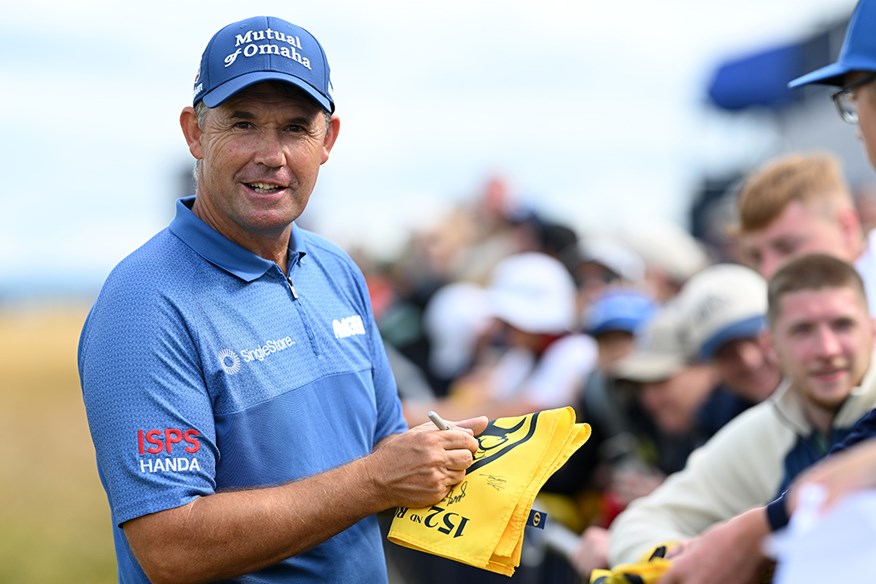Padraig Harrington: ‘Tiger Woods says he can’t wait to beat me on the Champions Tour’
Last updated:
Exclusive: World Golf Hall of Famer Padraig Harrington on Tiger’s challenge, the golf book that transformed his career, and why he genuinely believes everyone is capable of playing to a single-figure handicap
For 13 magical months in the late 2000s, Padraig Harrington mastered golf. Between July 2007 and August 2008, he won an Open Championship hitting a draw, defended it the following summer hitting a fade, and then added the US PGA Championship to complete one of the fastest hat-tricks in Major history.
He was Europe’s most dominant player back then, a perennial range rat and deep thinker who famously used a spirit level to note the slopes across all 18 greens at Augusta National. He even played a practice back nine to see the shadows he’d putt in if he was among the last groups.
On his analytical approach, he once said, “I always get something out of it. Always. Always. You’d be amazed.” Harrington was doing what most of today’s top pros do when they were still in primary school.
Ahead of the US Open in June, the 52-year-old was inducted into the World Golf Hall of Fame with 36 titles to his name, including last year’s US Senior Open.
“I assume the honor is based on wins,” he said of the Hall of Fame. “But I’d like to think that it’s also my love of the game, my respect of the game, and everything that I love about golf.”
We asked him to dig a little deeper…
The Hall of Fame does give validation to your career. It brings a deep sense of satisfaction that, you know what, I did alright. At this stage in my career, I can enjoy it a lot more. When you’re winning tournaments, you can move on too quickly. I always say to young players that you need to enjoy it, because you don’t win as often as you think you will. You’ve got to cherish the moments and something like the Hall of Fame is that moment. It gives you a second chance to enjoy your whole career.
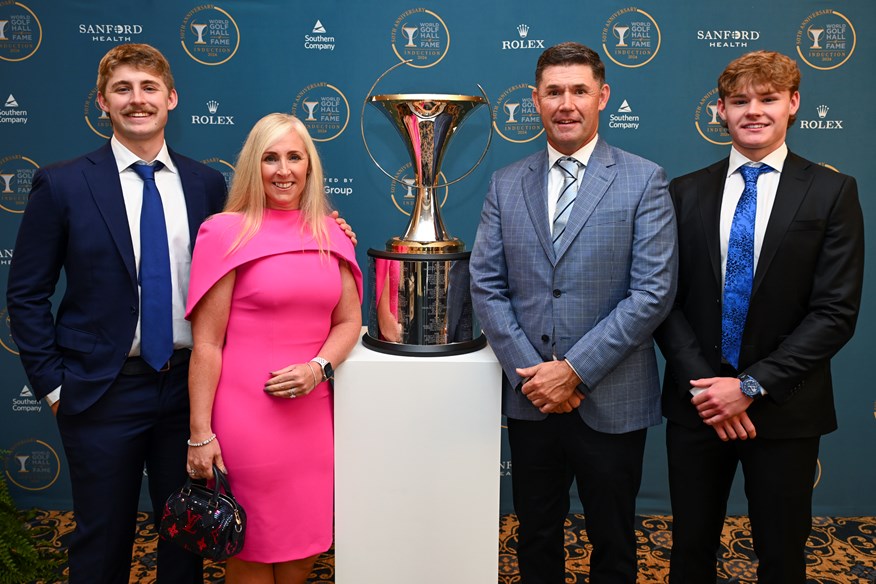
I owe a lot to my family because I grew up in a really competitive household. My father (Patrick) was a very successful sportsman in his own right. There was a lot of competition between me and my older brothers. I can remember playing cards aged four or five with my brothers and we would play for sweets. If you lost, they would eat your sweets, so you learned pretty quickly.
I had a brother who was 18 months older than me, and I spent my whole childhood hanging out with him and competing with him all the time. That gave me a huge head start, just to have that competition.
My father was one of the founders of Stackstown Golf Club. There was a dozen of them who got together and built the golf course themselves. That was my playground. I remember physically helping to level the 12th green. I was five years of age. We went along with our feet, patting it down. My older brothers got unlucky, they had to pick stones out of the quarries that became the fairways. I didn’t have to do that.
I was let loose on that golf course. My family spent an inordinate amount of time there and I had the run of the place as a nipper. I would be looking for golf balls, chasing rabbits and spending my day in that environment. From a young age I knew how to negotiate my way around the golf club. I joined at 10. Technically, you couldn’t join a golf club until you were 11 or 12 because you couldn’t get the insurance, but I got in a little early. I had clubs cut down when I was seven and I’ve still got them at home. By 13, golf started to become my number one sport.
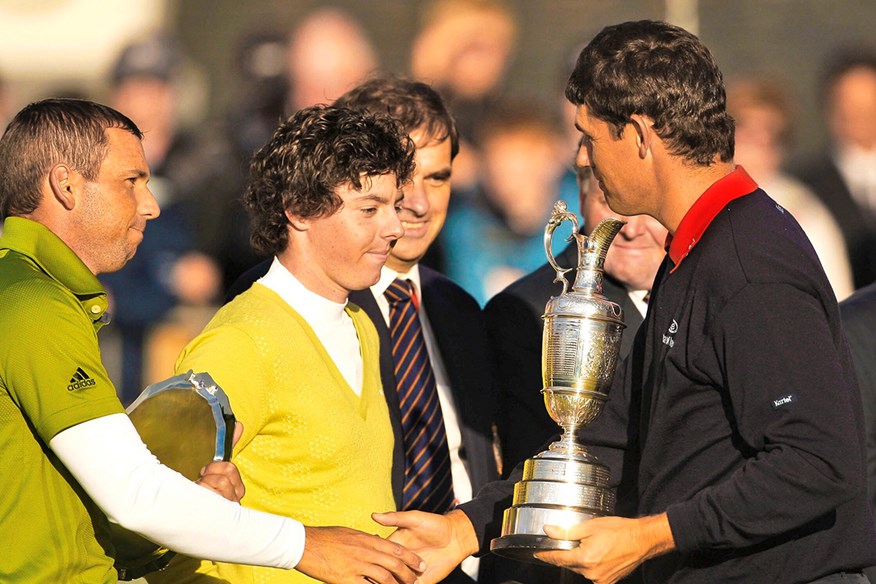
I actually thought I was going to follow in my father’s footsteps as a Gaelic footballer. I had no intention of being a professional golfer when I was 18. I never played a pro event until I was 24. You see these kids playing at 14, but that never crossed my mind. What was different about my career was that at no stage did I move up a level until I dominated. So, I started beating everybody in the club, then everybody at my age in the county, then I started playing for Ireland in my age group… I basically moved up through all the ranks.
When I turned 18 I didn’t get picked on the Irish panel of 20 players. I felt I was the No.1 ranked player under 21 but I didn’t make that panel of 20. Since then, I’ve never taken very well to committees. If they only looked at results, I was number one. But for whatever reason, I didn’t get picked, probably because I didn’t have a very pretty swing. I just got the job done.
My brother, who was an accountant, enrolled me in a night course at technical college. But I got to play golf during the day to keep progressing. My greatest record in golf is that I never lost a singles match playing for Ireland over six years in European Championships and Home Internationals. That’s why I turned pro. I played at the top of the order, never lower than three, and I was beating the top players. When I saw them turning pro, I was like, “I should turn pro.” That was the only reason.
I played my first pro tournament at the European Open at my home club, The K Club. I got my preparation all wrong and missed the cut. The guy I played with went into the clubhouse after and told all and sundry, “Why is this guy turning pro? He’s not going to make it, he hasn’t got the game for it.” When I look back now, I probably would have said the same thing, but I was very dogged. I kept my head down, did my thing and played with blinkers on.
It helped me that I grew up on a very tricky golf course. It’s on the side of a mountain, very windy, and it got very firm in the summer. I’d hit six greens in regulation. I grew up to be a clever golfer. It wasn’t conducive to putting the ball in the air for any length of time. But because that was all I knew, I didn’t know anything different. I was shooting 66 or 67, hitting six or seven regulations. My playing partners would say, “This can’t last.” But it did.
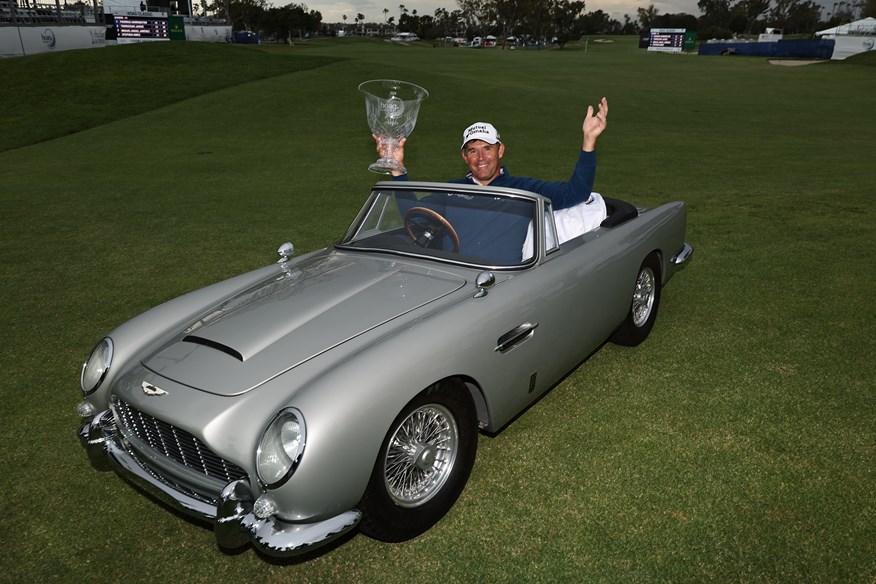
I was just hoping to be a journeyman pro for five years and to come back and become a manager of a country club. That was my aspiration. I never realized I would win so quickly after 10 weeks on tour. But once I started, I always wanted to improve. I was obsessed with getting better. Even when I have the worst day, the minute I get back on the horse, I’m hitting shots, dreaming about the future and not looking back. Even at this age, I wake up every day, thinking I’ll find the secret. At this point, you have to create your own reality. It doesn’t have to be logical or true to anybody else, but you’ve got to create it yourself and buy into it.
One moment which had a big impact on me came when I was 18 and lost the first youth tournament of the year. I threw away a two-shot lead with three to play by bogeying the last three holes. I was called a choker and basically laughed at. I definitely cried afterwards.
Under the encouragement of my dad, I started working with a sports psychologist in Dublin called Dr Aiden Moore. That was my first foray into that side and I realized that I didn’t choke, I relaxed. Basically, my attention span widened too much. So, I have performed much better in my career with fear. I have to keep myself hyped up. When I won my first three Majors, people would comment on the mad eyes. But I needed that intent.
Bob Rotella and Bob Torrance helped me to become the complete player. I read Bob’s book, Golf Is Not A Game Of Perfect, going into the Madeira Island Open, and I had never played golf like I played that week. I hit the ball too well. Imagine that? I didn’t win the tournament as I hit the ball too well. I had never experienced a nirvana moment like that in golf. Immediately, my wife got on the phone to Bob and arranged for us to go to Virginia to see him. I spent two weeks in his basement, talking about golf, and it all made sense. Twenty-six years later, I don’t play golf with swing thoughts. I just play with the target in mind.
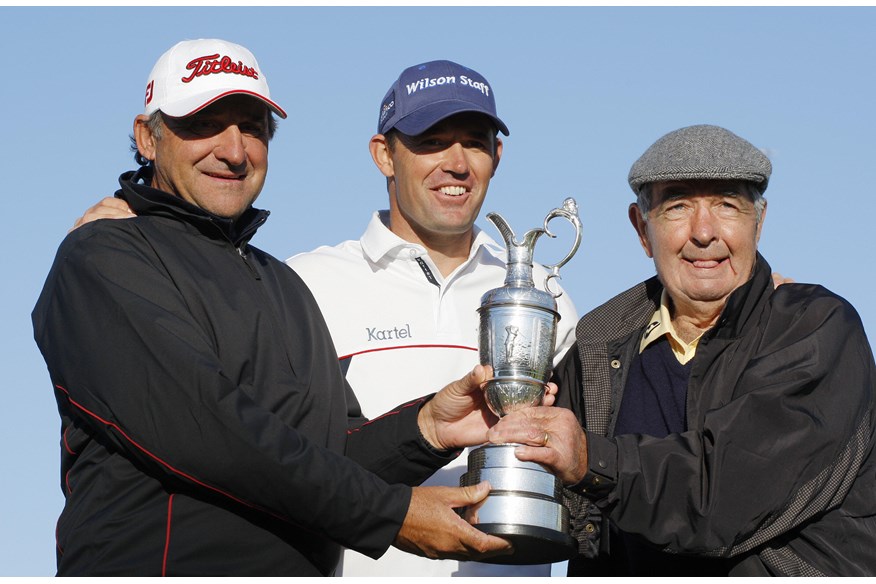
At the 1998 US Open I finished 32nd and that was my peak. At least I felt it was. If I wanted to do better in a Major, I had to become better. I stepped back for a year. I kept playing, but it wasn’t until I finished runner-up in the last two events to make the 1999 Ryder Cup team that I felt like I was coming back from my swing changes. It took 18 months of working on it.
At the end of 1999, I was a different golfer. If you saw my swing going into the last couple of qualification events for the 1997 Ryder Cup and then the 1999 Ryder Cup, it was distinctly different. I was a much better ball striker and from then on, everything was building towards the Majors.
I took a leaf out of Phil Mickelson’s book. Every time I talked about the Majors, I talked about them in the plural. When you win one, it becomes an awful burden on the rest of your golfing career. You’re always trying to live up to it. You’re always judging yourself, everybody else is judging you. You enjoy it when you retire, but during your career it’s a weight around the neck. So in my head I wasn’t trying to win one Major. I was trying to win two Majors.
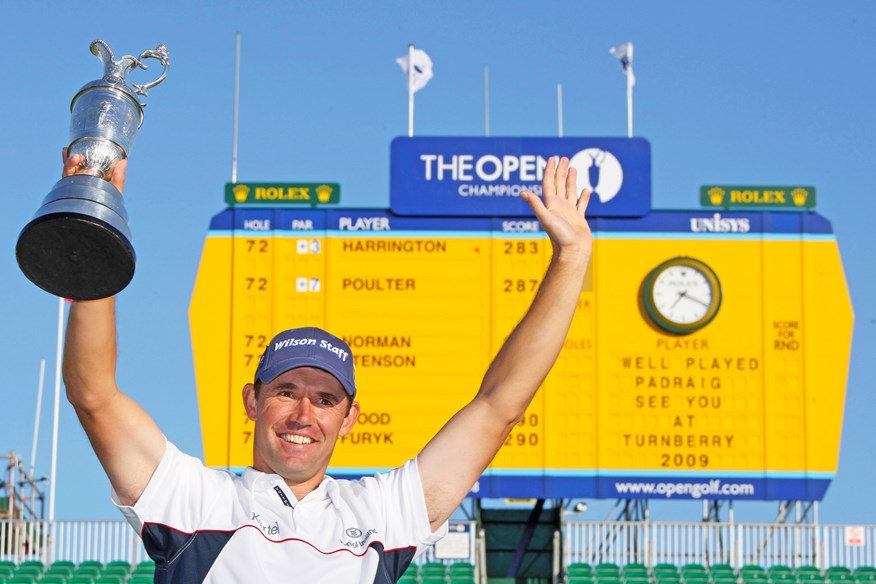
In the 2006 US Open at Winged Foot, three pars would have won it for me. I was playing the best golf of my life. I then bogeyed the last three off three good tee shots. Even on the last green, I had a putt to get in the playoff, but I three-putted. As I walked up to the clubhouse, Bob Rotella was at the door, outside the recorder’s hut. I should have been devastated, but I looked at him and said: “Now I know I can win a Major.”
It was the first time I knew what I was doing. I felt I could it again. I felt I had a system of getting myself in the zone to be able to compete. I knew then that it was a matter of time if I could apply that system going forward and that’s what I did.
At Carnoustie the following year, I was right there. I played very well and I was in the zone. Yes, I was a little overconfident on the 18th and made a mess of it, but I got the chance in the playoff and took it. I then followed it up at Birkdale. I swung the club great and played great.
Carnoustie in 2007 was exciting because it was my first Major win. But I did mess up the 72nd hole so it left something wanting. At Birkdale in 2008 was very satisfying. Again, it validated the 2007 one and I was always very keen to not get stuck on one Major. That was very, very important for me.
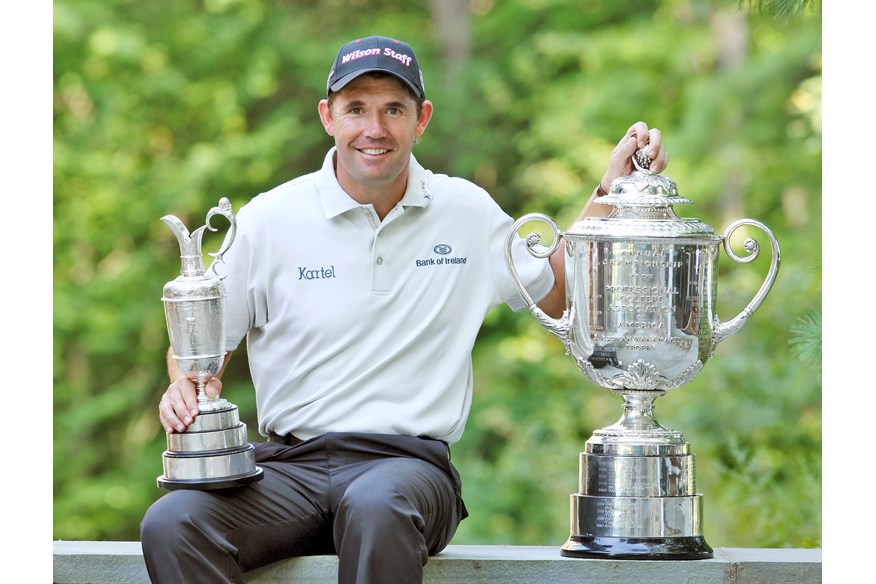
I played much better in 2009 than I did in 2007 or 2008, but I didn’t win. We always look at results as a way of judging things, but statistically, that was my best year. People like to think I disappeared and made a mistake changing my swing, but in 2007 I was playing with a draw. In 2008, I won two Majors playing a fade. I couldn’t handle the drive I hit on the 72nd hole at Carnoustie, so I changed everything for the next year. The only thing I know is change. It got me to winning one Major in 2007, and two Majors in 2008.
I had a period, between 2000 and 2007, of finishing second a lot and I used to see that as a learning curve. The amount of times I was in contention on a Saturday evening and I was still trying to improve for the following week or the week after. And that was wrong. I should have been focusing only on the Sunday. I could have waited an extra day, but my patience wouldn’t allow me to. I overworked on Saturdays. So of the 40 second places that I’ve had, there’s no doubt I messed up a few.
The one thing I regret is a lack of confidence I had in myself. I used to overprepare and by the time Sunday came around, I was worn out. I didn’t do that at Majors because I was disciplined. I essentially stopped practicing my technique three weeks before the event. It took me that long to shut my mind down.
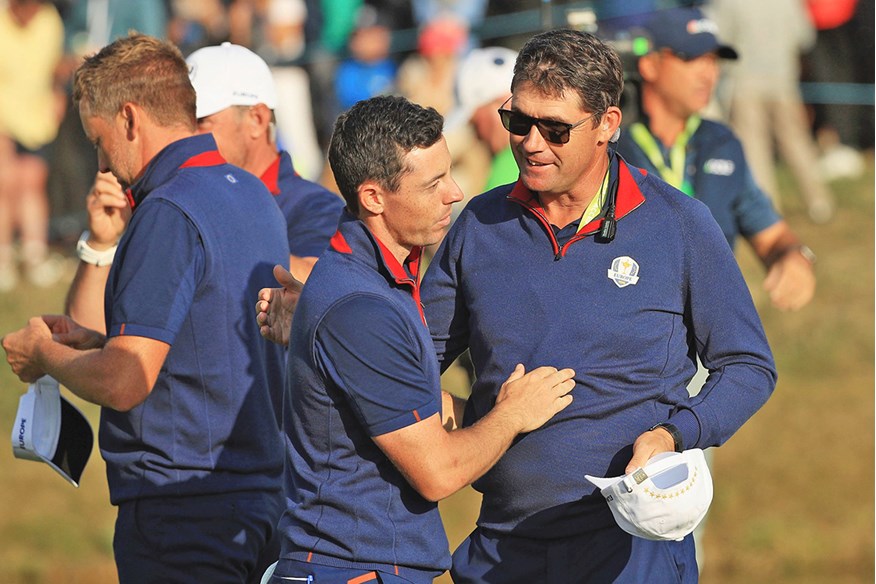
There’s an element of naivety about me that I believe I can do anything. Look at my Ryder Cup captaincy. The odds of winning an away Ryder Cup are crazy, but my whole ego has been based on crazy. Had it been a year earlier, my team was peaking and theirs was in complete disarray. One year later after Covid and my team had been struggling with no golf. So as much as it was a big mountain to climb, winning away from home, that one-year break saw a big swing in fortunes between the two teams. It’s tough to lose, but I take a lot of comfort from the fact that a lot of players said it was the best Ryder Cup they’ve ever been part of.
I am a dreamer. I love practicing, probably too much. I still believe I can win a regular event. I still harbor the dream of catching lightning in a bottle and winning a Major. Physically, I feel good enough but mentally, you lose a little bit of edge as you get older. But my greatest trait is that I am an optimist. I also give Shane Lowry credit for this because he once said, “Harrington believes he will win events that he’s not even playing in.”
I met Tiger recently and he said he was looking forward to coming out onto the Champions Tour. So he has an intention of playing. I think his words were, ‘I can’t wait to beat you out on the Champions Tour or something like that’. He doesn’t want me to have it all my own way, let’s put it like that! I’m looking forward to the challenge.
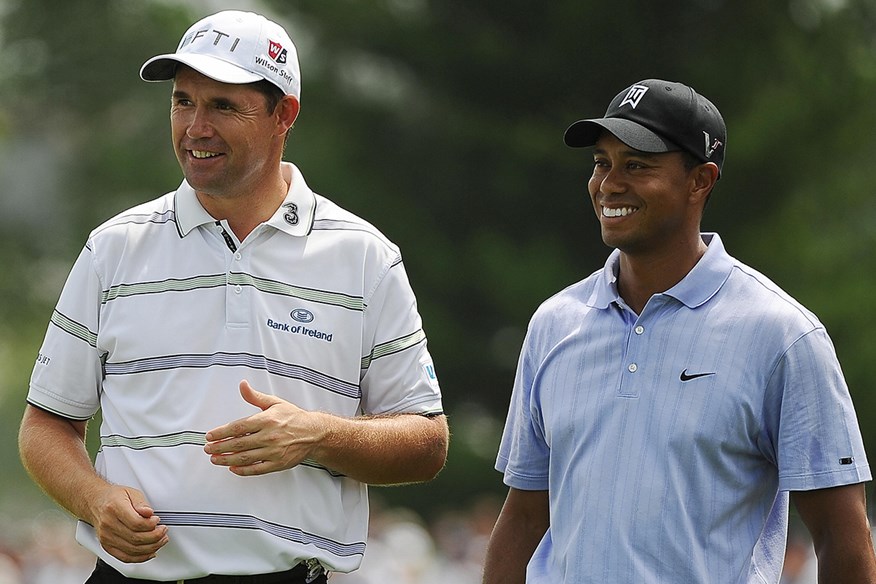
I got a lot of traction the other day for saying that everybody should get to single figures. But I genuinely believe that. If you are not able to get to single figures, you’re doing it wrong. I’ve done a sequence of 12 tips on my YouTube channel (Paddy’s Golf Tips), explaining how. Now, there’s no magic pill for this and you’re not able to do it without doing some work. But there’s a massive difference between having an effective, simple swing to get you to single figures and having a golf swing to become a professional golfer. Too many people chase the wrong one and they physically can’t do that sort of stuff.
-
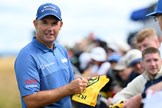 Padraig Harrington has amassed over 100,000 subscribers on his YouTube channel.
Padraig Harrington has amassed over 100,000 subscribers on his YouTube channel.
-
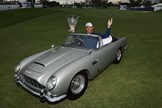 Padraig Harrington is an eight-time winner on the Champions Tour.
Padraig Harrington is an eight-time winner on the Champions Tour.
-
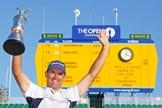 Padraig Harrington defended the Open Championship at Royal Birkdale in 2008.
Padraig Harrington defended the Open Championship at Royal Birkdale in 2008.
-
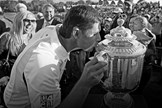
-
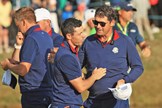 Padraig Harrington knows a thing or two about Rory McIlroy – and about winning a major.
Padraig Harrington knows a thing or two about Rory McIlroy – and about winning a major.
-
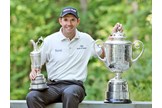 Between 2007 and 2008, Padraig Harrington won three majors in the space of just 13 months.
Between 2007 and 2008, Padraig Harrington won three majors in the space of just 13 months.
-
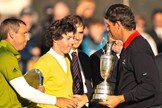 Padraig Harrington with a young Rory McIlroy and runner-up Sergio Garcia at the 2007 Open Championship at Carnoustie.
Padraig Harrington with a young Rory McIlroy and runner-up Sergio Garcia at the 2007 Open Championship at Carnoustie.
-
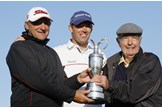 Bob Rotella and Bob Torrance made Padraig Harrington the 'complete player'.
Bob Rotella and Bob Torrance made Padraig Harrington the 'complete player'.
-
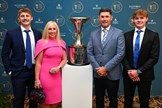 Padraig Harrington and his family at the World Golf Hall of Fame at Pinehurst.
Padraig Harrington and his family at the World Golf Hall of Fame at Pinehurst.
-
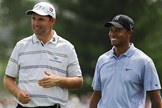 Tiger Woods wants to continue his rivalry with Padraig Harrington on the Champions Tour.
Tiger Woods wants to continue his rivalry with Padraig Harrington on the Champions Tour.
